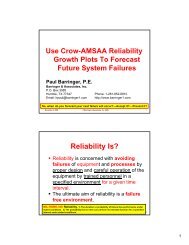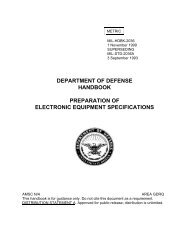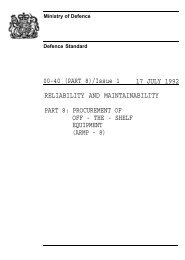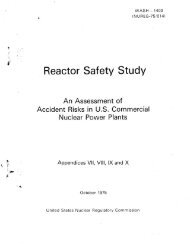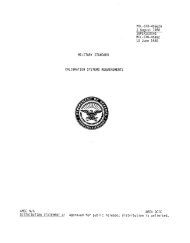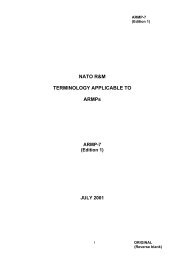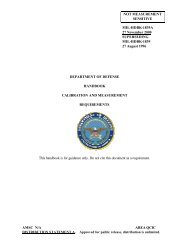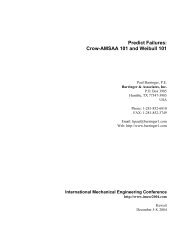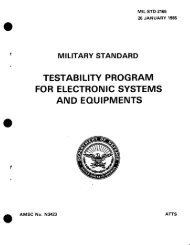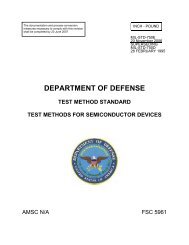MIL-STD-1629-RevA - Barringer and Associates, Inc.
MIL-STD-1629-RevA - Barringer and Associates, Inc.
MIL-STD-1629-RevA - Barringer and Associates, Inc.
You also want an ePaper? Increase the reach of your titles
YUMPU automatically turns print PDFs into web optimized ePapers that Google loves.
.<strong>MIL</strong>-<strong>STD</strong>-<strong>1629</strong>AIall identified operation <strong>and</strong> mlSS~On essentia] sl~~systems <strong>and</strong> component~.The the of damage’mode that each component can experience (i.e., fire,explosion, engine fuel ingestion, tOXiC fumes, smoke-corrosive materials,etc.) <strong>and</strong> the primary <strong>and</strong> secondary damage effects to which each componentcan be exposed shall be identified. Each nonessential component alsoshall be examined to determine if a hazardous environment may be createdby its sustaining the type or level of damage identified. This shallalso include any cascading effect on other subsystems from an initialsystem or component response. The essential components that may beexposed to the hazardous environments shall be identified..3.1 Weapon system operation <strong>and</strong> mission essential functions.The requirements for weapon system operation <strong>and</strong> mission essentialfunctions shall be determined for each mission phase <strong>and</strong> included in thefunctional narrative developed in 4. of Task 101. The weapon systemoperation <strong>and</strong> mission essential functions shall be established down tothe indenture level that individual subsystems <strong>and</strong> major componentsrequired to perform the function can be identified.3.3.2 Identification of critical components. Using the systemschematic or functional block diagram, the assigned severity codes, <strong>and</strong>the established weapon system operation <strong>and</strong> mission essential functions,each subsystem <strong>and</strong> major component required to perform each missionessential func:ion shall be identified. The reliability block diagramshall be used to identify subsystem <strong>and</strong> function redundancies. A criticalcomponents listing shall be included with the functional narrative <strong>and</strong>with the DMEA kwrksh(~ets In the FMECA report, Cenera~ Requirements, 4.5.4* DMEA worksheet. Documentation of the DMEA is accomplishedby completing the columns of the approved MEA worksheet. An example ofa DKEA worksheet forma&-is shown in Figure 104.1. Completed DMEA worksheetsshall be included in the FMECA report, General Requirement, 4.S,following the FMEA worksheet for the same indenture level. The followinginformation is the same as given in the FMEA worksheet <strong>and</strong> shall betransferred to the DMEA worksheet:a. Identification numberb. Item/functional identificationc. Functiond. Failure modes <strong>and</strong> causese. Mission phase/operational modef, Severity classificationTASK 104—24 November 19801(?4-?



